Vineyard Profile: White Castle Vineyard
4th August 2023
Initially a couple’s retirement dream, White Castle Vineyard has become much more than that. Through years of dedicated work, owners Robb and Nicola Merchant have converted what was once a run-down dairy farm into a thriving enterprise that is now at the forefront of Welsh wine production, renowned for crafting quality wines with care and sustainability.
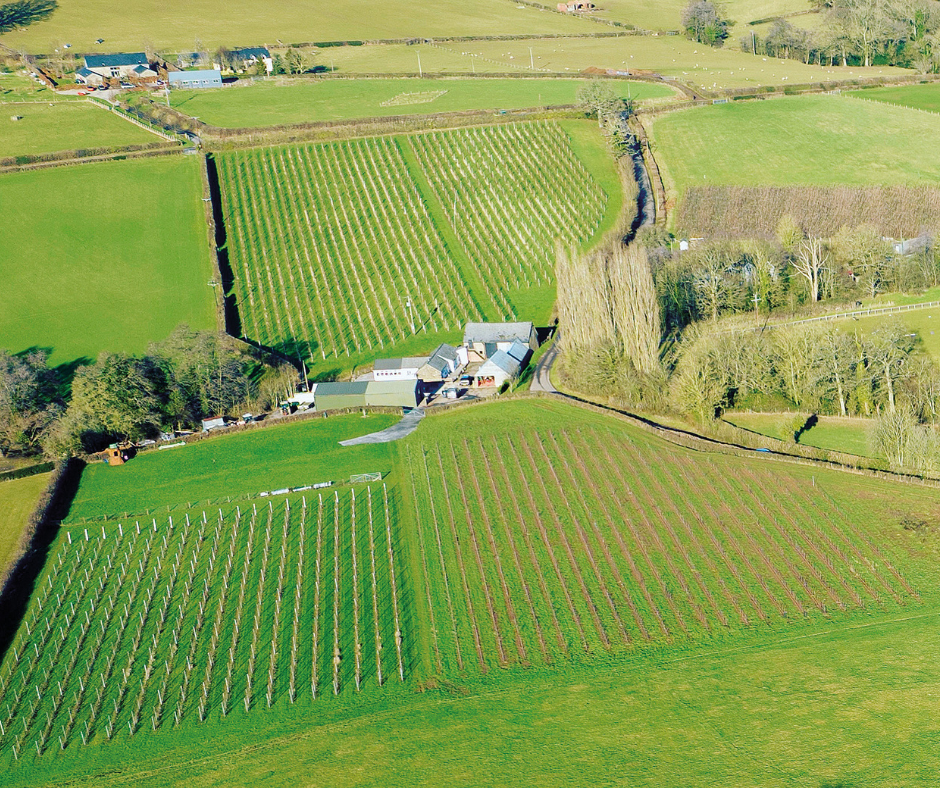
White Castle counts a total of 13,500 vines – 3,500 of which were planted in May this year.
Vineyard Profile
- Grower : White Castle Vineyard
- Location : Situated near the village of Llanvetherine, midway between the market towns of Abergavenny and Monmouth in South East Wales
- Vineyard size : 7ha, with 5ha under vine
- Soil type : Free-draining sandy clay loam
- Aspect : Sheltered by the Black Mountains to the west, the vineyard sits 94m above sea level around 30 miles north of Bristol Bay
- Varieties : Heavy on Pinot Noir Précoce with the variety making up half of the vines (1ha); the rest is split between Regent (0.4ha), Rondo (0.2ha), Cabernet Franc (0.4ha), Phoenix (0.4ha), Seyval Blanc (0.2ha), and Siegerrebe (0.3ha), with Chardonnay vines introduced in May
An introduction to White Castle Vineyard
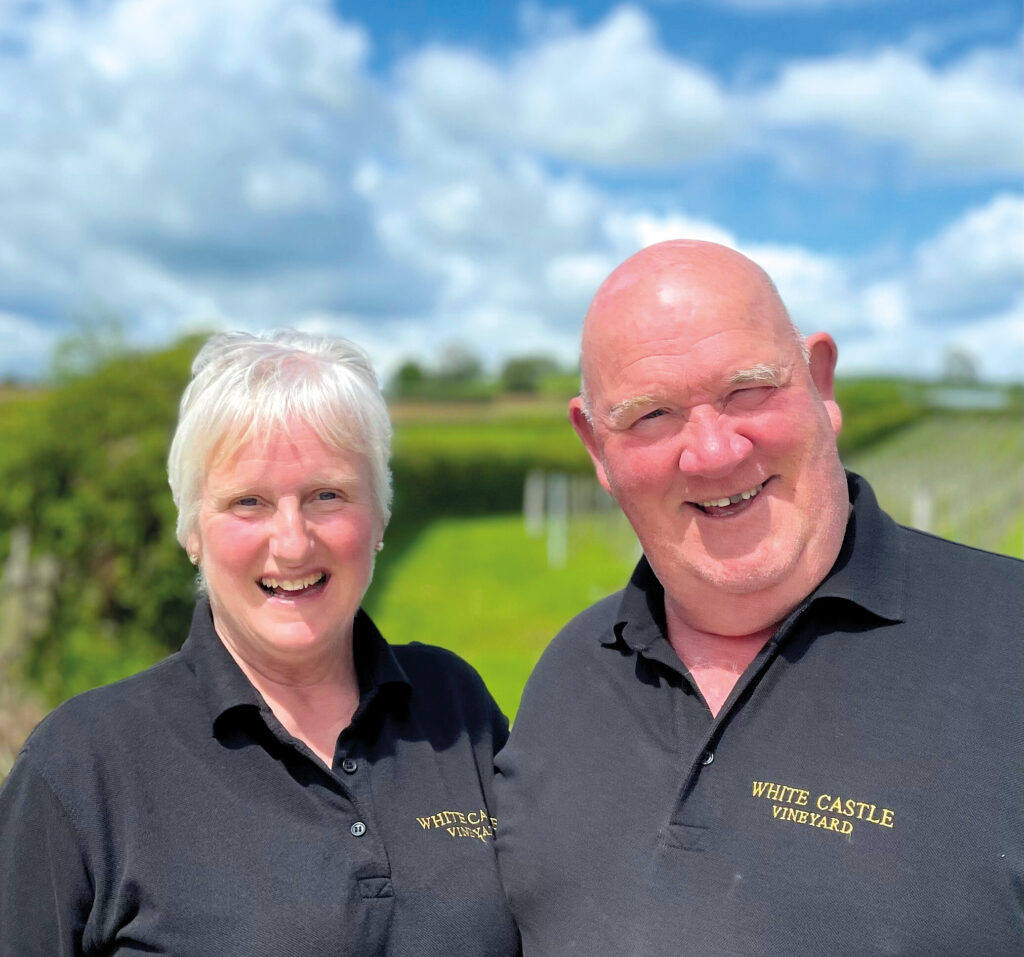
Robb and Nicola Merchant
Having always been in and around agriculture, Robb Merchant purchased a 5ha smallholding near the Welsh village of Llanvetherine, on which he initially farmed sheep for a number of years.
At the time, the property only had a few farm buildings on it, including a Grade 2* listed barn of architectural importance to Wales.
Dated to 1581, the building was originally a corn barn and it now stands restored as a valued part of the property. “The council has been good to us in many ways as although they didn’t want us to convert the grain barn, they gave us planning permission very quickly to convert the milking parlour into our present bungalow,” Robb recalls.
“Then Nicola started having a dream about planting a vineyard. It’s all Nicola’s dream, I just live in it. I’m very fortunate.”
However, it wasn’t until 2008 that her dream began shaping up to become reality, when an additional 2ha south-facing field was purchased. Following extensive soil tests, the first 4,000 vines were ordered in November 2008 and planted the next year.
The initial varieties planted were Pinot Noir Précoce, Regent, Rondo, Seyval Blanc and Phoenix. The first harvest was undertaken two and a half years later in 2011, gaining the vineyard Protected Designation of Origin (PDO) from Wine Standards, which allowed the produce to be labelled Welsh Quality Wine.
May 2010 saw a further planting of 800 vines of the white Siegerrebe variety. Fast-forward to the vineyard’s 10-year anniversary in 2019, and Robb and Nicola expanded plantings onto the estate’s north-facing slopes, establishing a further 2,000 vines of Pinot Noir Précoce and Cabernet Franc, followed by another 2,500 Pinot Noir and 500 more Phoenix in 2022.
Presently, White Castle counts a total of 13,500 vines – 3,500 of which were planted in May this year. This latest expansion saw the introduction of Chardonnay and further plantings of some white wine varieties to rebalance the vineyard’s top-heavy red production.
Explaining his approach to planting a wide selection of varieties despite having limited land, Robb says it’s all to do with their focus on quality rather than large-scale production, and the desire to offer something for everybody.
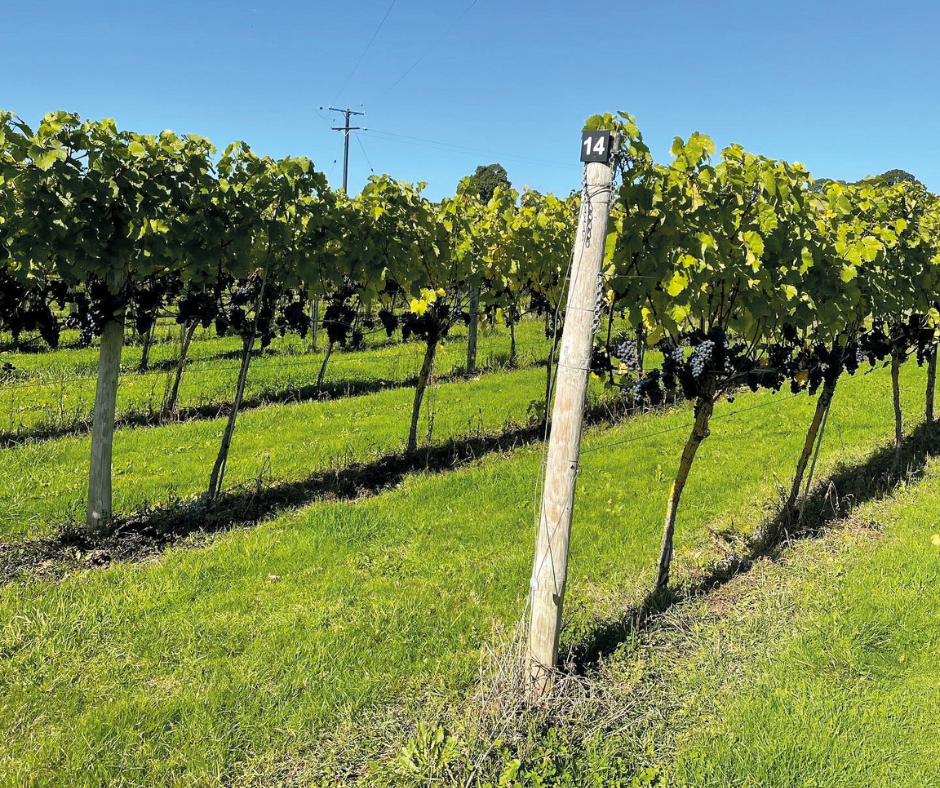
The trellising system employed is mostly VSP with metal end posts.
“Quality winemaking starts in the vineyard”
Both Robb and Nicola studied viticulture at Plumpton College to acquire the skills and knowledge needed to produce quality wines. This training has enabled them to adopt a hands-on approach to vineyard management and take charge of operations from the start.
“We have carefully selected varieties that we know will grow well in our soil and produce grapes of the highest possible quality in the microclimate of the vineyard,” Robb says.
Located to the east of the Black Mountains, White Castle receives less annual rainfall and has a warmer and drier climate than other parts of Wales, making the site and surrounding region ideal for vine growing. The prevailing wind and rain are from the south west, and the highest point of the vineyard is 94m above sea level.
Robb monitors conditions across the vineyard through a weather station, which provides readings of air temperature, humidity, rainfall, and wind direction every five minutes. The couple also conduct regular soil and leaf analysis to include in the site’s database and closely monitor the performance of each row, allowing for timely adjustments as and when needed.
Meanwhile, the vines benefit from free draining sandy clay loam soils and plenty of sunshine on both south and north-facing slopes. The south-facing vineyard offers slightly poorer drainage, as it was destoned for potatoes in the past, which is “the surest way to ruin ground,” Robb notes.
The trellising system employed at White Castle is VSP with metal end posts, except for the older plantations where some wooden posts remain.
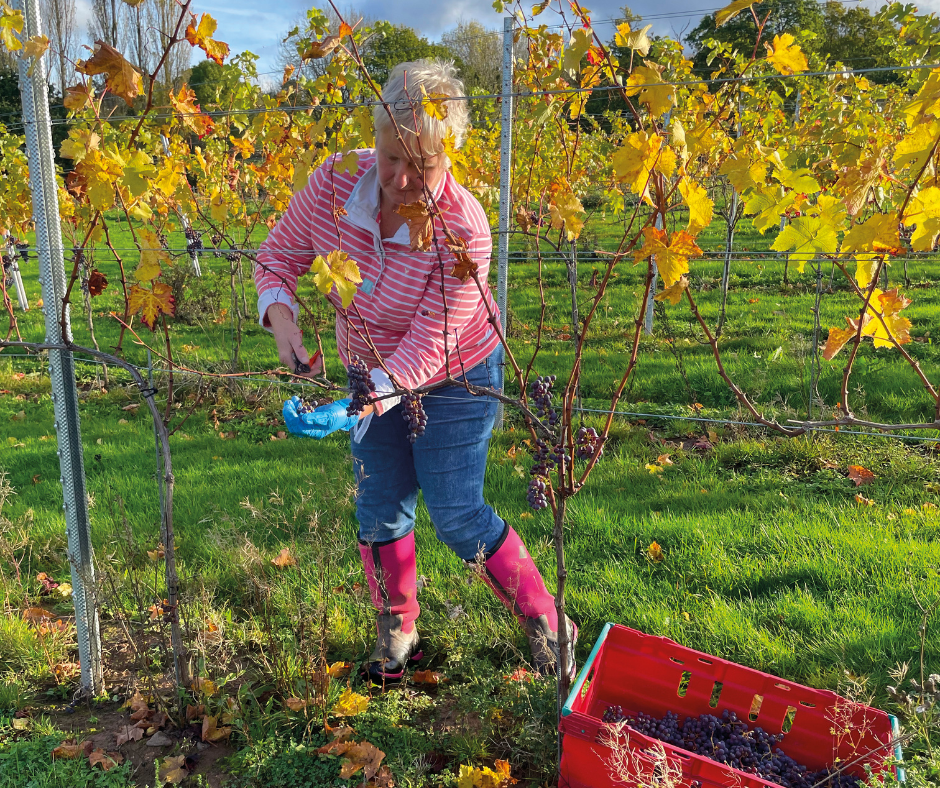
Prior to harvest, Robb and Nicola quality-check the grapes and discard anything they don’t want to go on for processing.
Advancing through trial and error
With the goal of continuous improvement in mind, Robb and Nicola are always searching for new practices to try out in the vineyard. Spur pruning is currently being trialled on three Pinot Noir vine rows, in the hope of increasing the volume of grapes produced.
The rows will be monitored for sugar and acidity ripeness in separate batches to see how they perform in comparison to the rest of the vines, which are all cane pruned. If the rows fail to produce the levels required for red wine, the fruit will go on to make either sparkling wine or rosé, so there is nothing to lose, Robb explains.
Canopy management at the vineyard consists of leaf stripping and cane positioning, aimed at maximising the sunshine and airflow between vine rows. At the time of Fruit & Vine’s visit in early May, bud burst was underway across the estate, with flowering set to begin towards the middle/end of June – which will give an idea of the size of this year’s crop.
Veraison typically starts four to five weeks after flowering, and the first day of harvest usually lands on or around 24th September. Like others in the industry, Robb has more recently experienced harvest starting earlier in the year, with the fruit taking three to four weeks to pick in total.
Prior to harvest, Robb and Nicola quality-check the grapes and discard anything they don’t want to go on for processing, so pickers have an easy job of harvesting the fruit that is left on the vines. The task is carried out by a nucleus of reliable local workers who have been supporting the vineyard over the years, helped by friends, family and volunteers.
In recent years, White Castle has been averaging 12–13 tonnes of annual fruit yield; equivalent to around 10,000 bottles of wine. The estate produces a full range of wines, offering three reds, two whites, a small volume of rosé and a fortified wine. Meanwhile, its sparkling range features a white and rosé option, both produced using the traditional method.
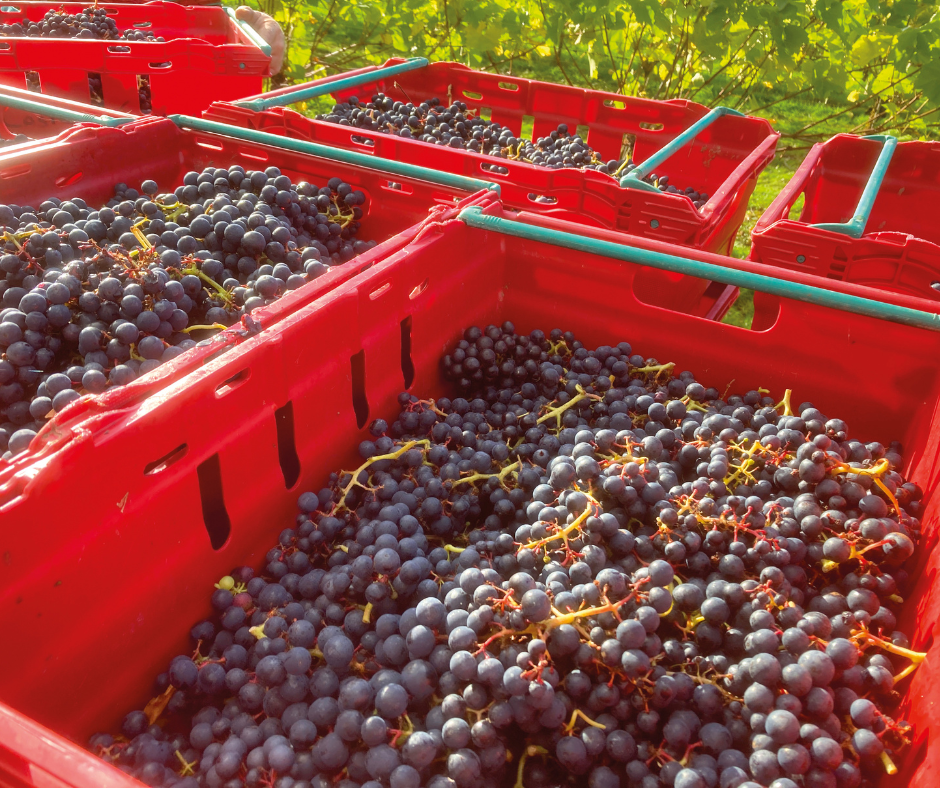
Harvest is carried out by a nucleus of reliable local workers
International recognition
The wines of White Castle Vineyard have won multiple awards locally, nationally and globally, evidence of the care and skilful crafting that has gone into their production. In 2021, the estate became the first Welsh vineyard to win gold at the Decanter World Wine Awards with its home-grown Pinot Noir Précoce Reserve 2018, followed by the silver at Decanter 2022.
Other award-winning wines produced by Robb and Nicola include the white Gwin Gwyn, which translates ‘wine white’ in Welsh, made from Phoenix grapes, which are a PiWi variety.
Once aged, the wines are destined for independent bottle shops and high-end restaurants, distributed primarily in Wales via Fine Wines Direct, as well as Gwin Dylanwad Wine shop in Dolgellau, North Wales, amongst other trade partners.
Around 55% of the produce is sold through the cellar door, which opened in 2012, and customers can also buy through the vineyard’s online store. Marketing is primarily done via social media, which has worked well for the business, with the couple experiencing high demand for their wines.
“Ultimately, that’s what we’re here for, but we also have a great life, away from the day jobs that we used to do,” Robb adds.
He attributes a large part of the success White Castle has achieved to their agronomist Chris from Hutchinsons, who has been bringing his expertise to the team since 2011. The business has also recently hired a full-time vineyard operative to carry out routine tasks in the vineyard, such as pruning and securing vines and shooters on older plantings.
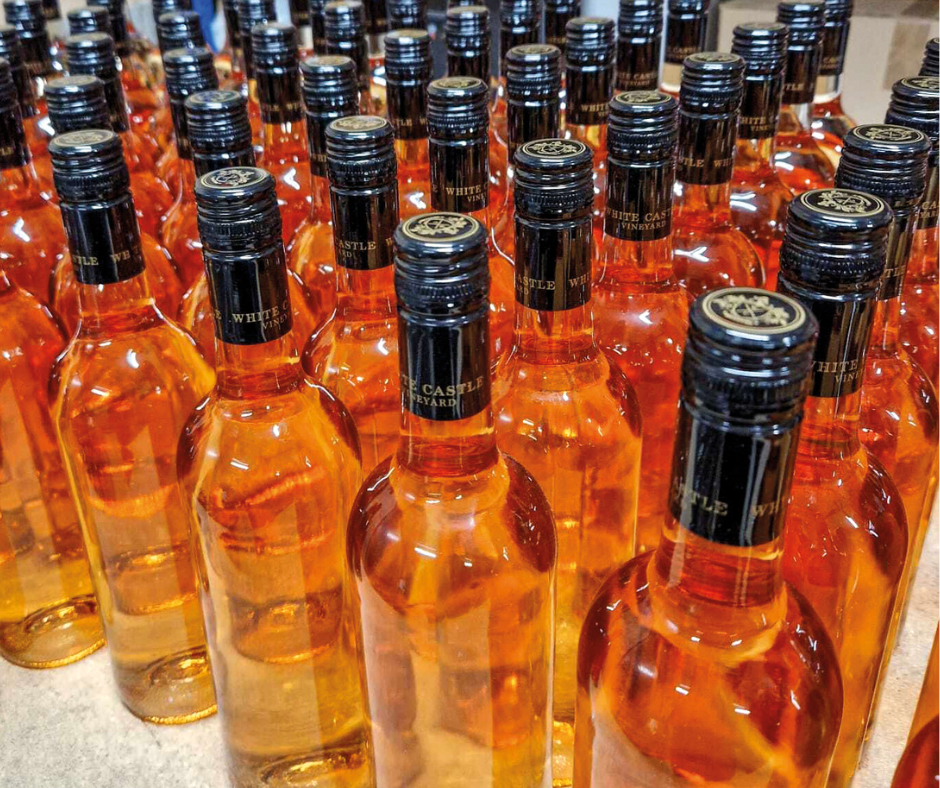
Around 55% of the produce is sold through the cellar door, which opened in 2012, and customers can also buy through the vineyard’s online store
Bringing production in-house
Immediately after harvest, the grapes are transported and pressed on the same day at Three Choirs Winery in Newent, Gloucestershire. Quick processing ensures the freshness and fruity aromas are retained in the juice, and with the winery located only 15 miles from the vineyard, it made for an obvious choice.
For many years, Robb and Nicola have been working closely with a contract winemaker to produce their premium wines. However, they now feel the time has come to take the next step in their winemaking journey and bring production in-house with an on-site winery.
According to Robb, the new facility would not only offer increased control of the winemaking process, alongside cost savings, reduced emissions and waste, as well as improved quality, but will also strengthen the profile of Welsh wines.
“With the winery, we’ll be able to say that our grapes are grown in Wales, and the wines are produced in Wales, and that will give us 100% provenance and integrity for Welsh wine, that will all be estate-grown.”
Works are already underway to lay down the foundations for the building, handled by Robb and Nicola’s son, who owns a civil engineering business. With the materials ordered and planning permission sorted, construction is set to go ahead imminently.
The couple started a crowdfunding campaign to raise funds for the winery equipment, which represents a major investment for the business. In addition, the project has been accepted into the expression of interest phase of a Welsh government grant, which would provide further funding for equipment.
Robb admits there is a steep learning curve ahead, as their focus so far has been on perfecting the vine-growing process at the vineyard. As such, the couple is considering employing a winemaker, who will have roles in both the vineyard and the winery.

Robb and Nicola are looking to take the next step in their winemaking journey and bring production in-house with an on-site winery.
Minimal intervention
Conscious of environmental concerns, Robb and Nicola take a minimal intervention approach when it comes to pest and disease management, which is mainly carried out via leaf removal and optimising air circulation between vine rows. The primary disease concerns have always been powdery and downy mildew, against which sulphur sprays are applied once or twice a year.
In the early days of the vineyard, plastic mulch was used as a weed suppressant under young vines; however, the practice was abandoned as it limits oxygenation of the soils. Robb is now looking to transition from under-vine cultivation to strimming as a means of weed control.
With regards to pests, he says deer are becoming more of a worry, along with wild boar. To keep the birds away, he flies a kite from a long pole in the south-facing vineyard, but otherwise does little to deter wildlife.
“Wildlife is a key part of the ecological balance of the vineyard, so, whilst we’re not organic or biodynamic, we focus on minimal intervention,” he explains.
In terms of frost, White Castle has only experienced one severe incident so far on 12th May 2020, resulting in the loss of 70% of that year’s crop. Despite only having enough fruit to produce 3,000 bottles of wine, Robb refrained from buying in grapes from elsewhere, as he is so committed to protecting the provenance and integrity of wines produced by the estate.
For Robb, managing frost is about balancing cost and risk, and since the vineyard has only experienced one bad episode in 12 vintages, no mitigation strategies have been implemented as of yet.
In contrast, last summer provided exceptional growing conditions for vineyards across the UK, resulting in outstanding quality wines. The outcome for White Castle was a harvest of perfectly ripe grapes with a greater intensity of flavours, although yield had suffered.
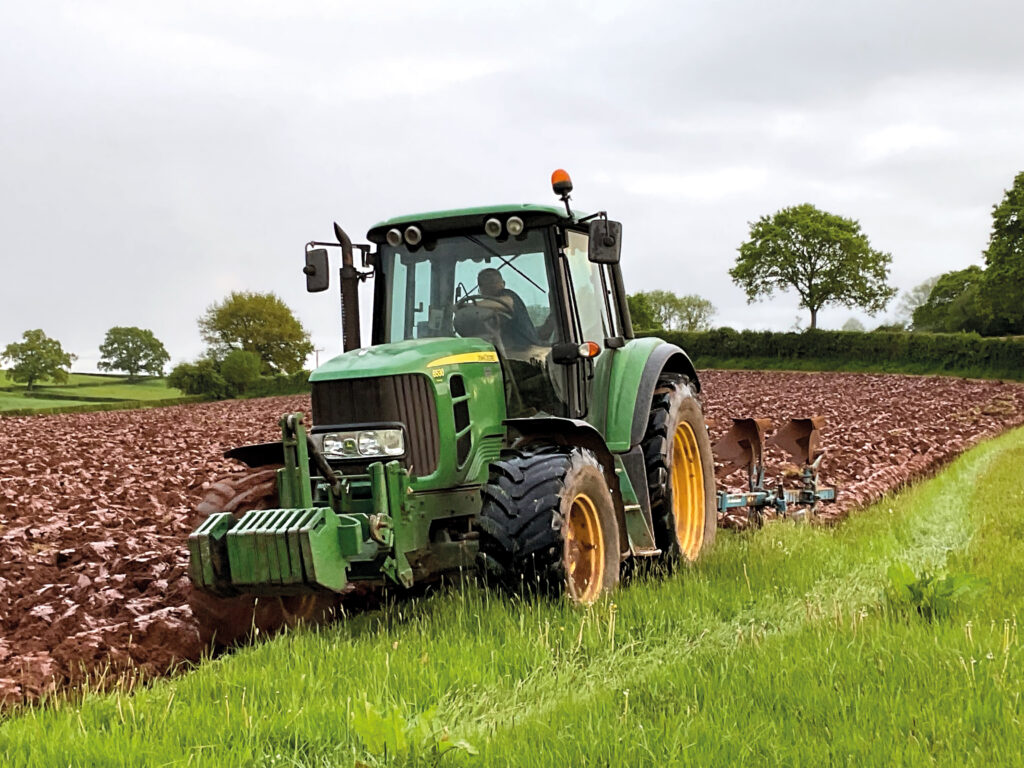
All the vineyard’s current machinery has been purchased new from dealers in the UK.
Essential machinery fleet
Robb’s machinery fleet is boiled down to the bare essentials and consists of a sprayer, vine trimmer, and under-vine cultivator that is pulled by a Same Dorado F90 tractor.
He is also looking at investing in a de-leafer to increase efficiency, although has some concerns as to whether it would work well for the vineyard, and is currently leaning towards hiring one for a year to find out if the machine is a suitable fit.
All current machinery was purchased new from dealers in the UK, with the vine trimmer sourced from Kent-based machinery supplier NP Seymour. As the business evolves, Robb is planning to update some of the kit, including the tractor, which he intends to replace with a one-pass system to reduce soil compaction and increase efficiency.
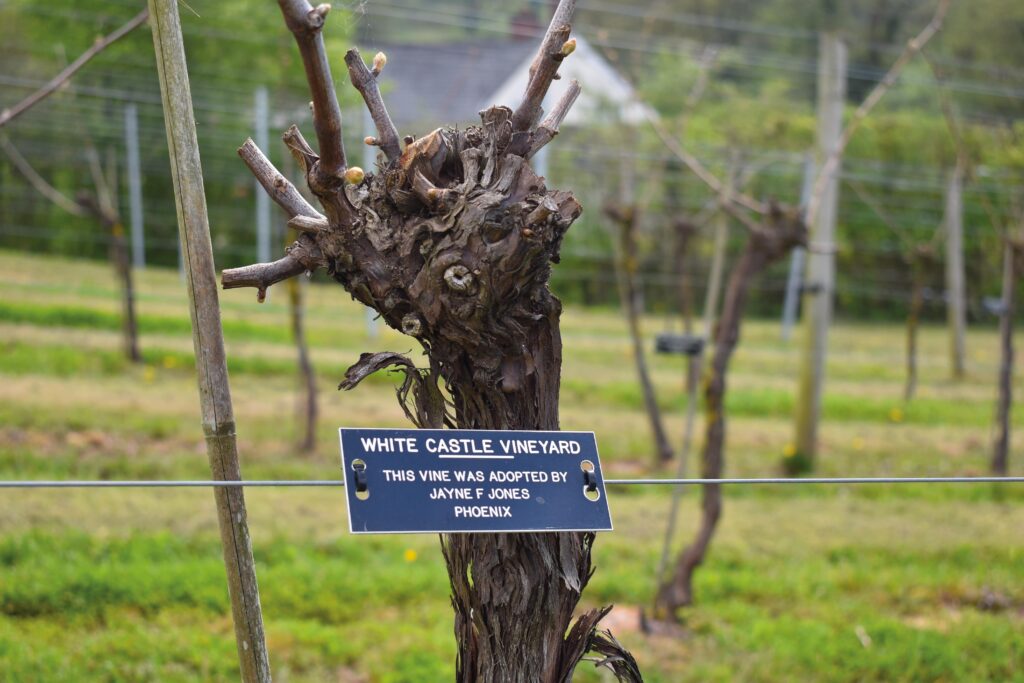
The ‘Adopt A Vine’ scheme has been very popular with wine lovers.
Adopt A Vine scheme
Under the hat of diversification, Robb and Nicola have set up a scheme they call “Adopt A Vine”, the idea for which came from a vineyard they visited previously. The scheme offers the opportunity to adopt a grapevine chosen by the customer from White Castle’s seven (soon to be eight) varieties, which includes:
- A personalised certificate of adoption valid for one year
- A plaque with the customer’s name to be placed upon their adopted vine
- A guided vineyard tour for two people to include a glass of wine
- An opportunity to join the White Castle team for a morning’s harvest
- A bottle of wine from their adopted grape variety.
Robb says the scheme has been very popular with wine lovers, and they currently have 660 vines adopted on the vineyard. It has also been a great way of creating a family feel for White Castle, building a solid customer base and boosting engagement. “Without the people, we are nothing; next to quality grapes, they are the first and foremost part of the business,” he added.
Robb and Nicola also run a number of other diversification projects, including vineyard tours, lunches, wine tastings, small wedding receptions and corporate events. They also offer cheese platters, artisan meat, charcuterie and fish platters to complement their wine.
The vineyard typically receives 3,500 visitors a year and is open to customers from Friday to Sunday. Robb notes the nearby 12th century Norman fortress, Whitecastle – from which the estate takes its name – has also helped to drive tourists to the vineyard.
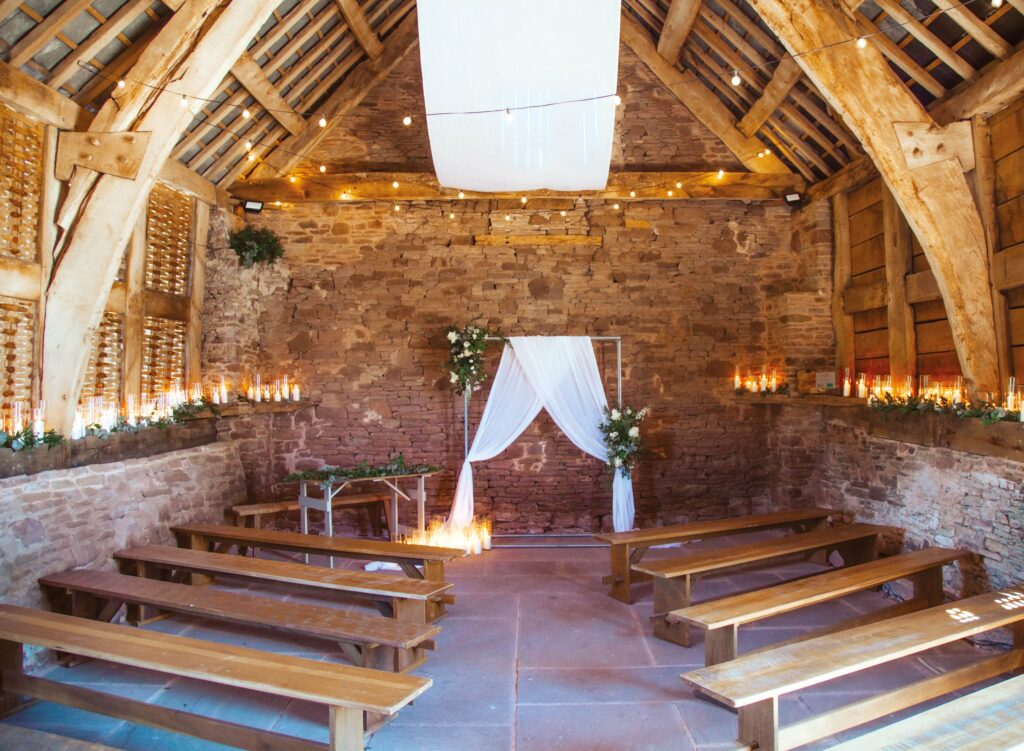
White Castle Vineyard also hosts small wedding receptions.
“Nothing is off the table”
The last 12 months have been challenging in terms of bottle supply, prompting Robb and Nicola to explore alternative packaging options. Bag in box is a format they have been considering for wine headed to be sold in bottle shops. However, products destined for restaurants will remain corked for the time being.
Robb says nothing is off the table, and with the vineyard being small, they have the luxury of being able to experiment with innovative ideas. Sustainability is also an important consideration for the business; however, Robb points out financial stability must come first.
In terms of the vineyard’s future, the couple’s focus is currently on expanding and making the winery a success, after which they will evaluate how to move forward. Quality, provenance and integrity will remain the three driving factors for Nicola and Robb, and represent all the White Castle brand stands for.
“For us, it’s all about producing quality Welsh wine, representing Wales and being proud to do that,” concludes Robb.
